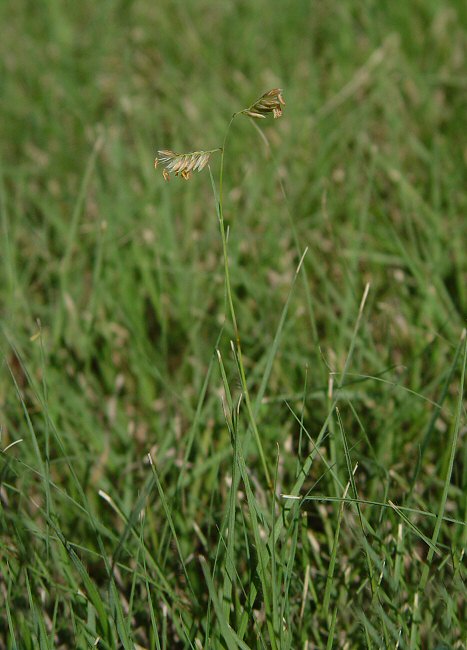Buchloe dactyloides (Nutt.) Engelm.
Buffalo Grass

Native
CC = 5
CW = 3
MOC = 3
© DETenaglia
Buchloe dactyloides (Nutt.) Engelm.Buffalo Grass | |
 |
Native CC = 5 CW = 3 MOC = 3 |
© DETenaglia |
|
Family - Poaceae/Cynodonteae Stems - No info yet. Leaves - No info yet.
Inflorescence - No info yet.
Flowers - No info yet.
Flowering - May - August. Habitat - Loess hill prairies, roadsides, railroads. Also cultivated as a lawn grass. Origin - Native to U.S. Other info. - This little species is rare in Missouri and can be found in just a handful of counties bordering the Missouri River. The plant is easy to identify becasue of its small size and distinctive staminate spikes. The pistillate spikes are small and mostly hidden amongst the leaves. Although the leaf sheaths appear quite hairy in the photos above, they can also be glabrous. The ligule is a short line of hairs. Photographs taken off Hwy 4, Beatrice, NE., 8-15-06, and at Tall Grass Prairie National Preserve, KS., 9-23-06. |